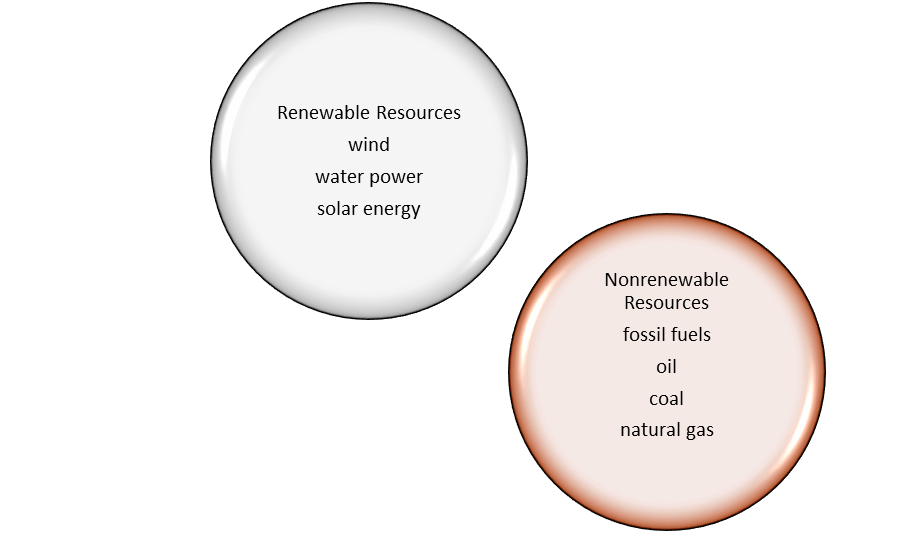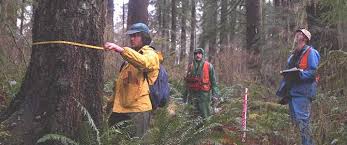Overview
Resources can be classified as renewable or nonrenewable. Both renewable and nonrenewable resources must be managed wisely. Nonrenewable resources such as coal, metals, oil, and natural gas exist in a finite amount. Renewable resources, such as wind or water power, exist in nearly unlimited amounts. However, if a renewable resource is depleted past the point where it can be replaced, it becomes nonrenewable.
Definition
Whether a resource is nonrenewable or renewable depends on the rate it can be replaced. Resources such as coal, oil, and natural gas are known as fossil fuels because they form from the decomposition of fossils under pressure. The process of decomposition takes millions of years, so they are depleted much more quickly than they can be replaced. In contrast, renewable resources, such as wind or water power, can be replaced relatively quickly in a cycle.
Figure 1: Some types of renewable and nonrenewable resources.
Sustainable Use
Sustainable use is a way of using natural resources so that they do not become depleted and nonrenewable. A forest can be clear cut in such a way so that the trees and vegetation cannot regenerate, and the ecosystem is destroyed. Species of fish can be overfished to extinction or near extinction. In contrast, trees can be selectively harvested and new trees planted in their place, so the ecosystem of the forest is not harmed. Fish stock can be responsibly managed, and new populations of fish grown through aquaculture.
Figure 2: Selective logging and new growth of forest trees enhance sustainable forestry.
Air Pollution
Living organisms need clean air to breathe. However, air quality is threatened by pollution from automobile exhaust and factory emissions. Toxic chemicals and particulates in the atmosphere react with sunlight to form smog, which is dangerous to plants, animals, and humans. Acid rain is another result of air pollution that affects the biosphere in many adverse ways. Toxic nitrogen and sulfur compounds are released into the atmosphere, to fall as rain, killing vegetation and contaminating the soil.
Figure 3: Automobile emissions are one of the causes of smog.
Water Pollution
Living organisms also need clean water. However, water quality is also threatened by pollution from many different sources. Wastewater, discharges of sewage, and oil or chemical spills pollute water supplies. Appropriate treatment of wastewater and sewage, as well as minimizing harmful runoff into water sources, can help to protect fresh water from pollution.
Figure 4: Living organisms need clean water.
Interested in biology tutoring services? Learn more about how we are assisting thousands of students each academic year.
SchoolTutoring Academy is the premier educational services company for K-12 and college students. We offer tutoring programs for students in K-12, AP classes, and college. To learn more about how we help parents and students in Cape Breton, NS, Canada visit: Tutoring in Cape Breton, NS, Canada





